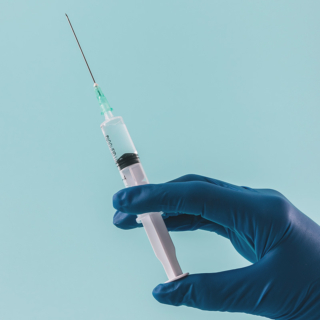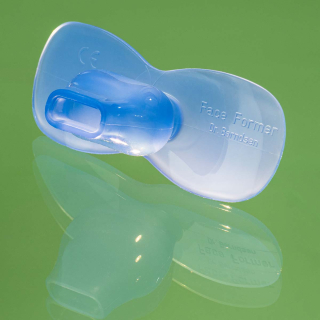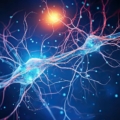Trigeminus pain
Causes and treatment methods
Causes and treatment methods
In this article we will focus on a fascinating cranial nerve – the trigeminal nerve. The trigeminal nerve is the fifth of a total of twelve cranial nerves and plays an outstanding role in the supply and perception of almost all sensory organs in our face. Its importance, function and division into three branches will be examined in more detail below.
The trigeminal nerve is a nerve of great importance for our well-being. It is characterised by its direct connection to the brain, which enables it to transmit information from the facial area quickly and precisely. This unique property enables us to perceive our surroundings quickly and effectively and to trigger appropriate reactions.
The trigeminal nerve owes its name to its division into three main branches that supply different areas of the face. Each branch is responsible for the sensitive perception and movement of certain facial regions.
Eyeball branch (ophtalmic nerve) – supplying the forehead and eyes: The first branch of the trigeminal nerve, the ophthalmic nerve, supplies the forehead, the eye region up to the root of the nose and the eyeball. These regions are central to the perception of our environment and the ability to take in visual stimuli.
Maxillary branch (maxillary nerve) – supplying the upper jaw and middle face: The maxillary nerve, the upper jaw branch, is responsible for supplying the upper jaw, the middle face area and the teeth in the upper jaw. The correct function of this branch is crucial for chewing and the perception of temperature and touch in the face.
Mandibular branch (mandibular nerve) – supplying the lower jaw and teeth: The mandibular nerve, the lower branch, supplies the lower jaw and teeth in the mandibular region. The function of this branch enables the movement of our lower jaw when speaking and chewing and is thus essential for smooth communication and food intake.
The main function of the trigeminal nerve is to transmit sensitive information from the facial area to the brain. It is responsible for the perception of temperature, touch and pain. At the same time, it plays a crucial role in controlling the jaw muscles, which are essential for chewing and speaking.
Trigeminal pain can be extremely uncomfortable and distressing. In this section we will look at the possible causes of this pain. It is important to understand that trigeminal pain can be caused by a variety of influences, including inflammation and damage to the nerve. We will also look at medical diagnoses such as trigeminal neuralgia and highlight different therapeutic approaches.

The causes of trigeminal pain can be varied and require accurate diagnosis and individual treatment. In the next section we will look at the possibilities and benefits of FaceFormer therapy, which is a promising solution for people whose pain has not been relieved by other methods.
A common cause of trigeminal pain is trigeminal neuralgia, in which the nerve repeatedly and suddenly triggers stabbing pain. This pain can last up to two minutes and can significantly affect the quality of life. Inflammation can trigger this neuralgia as it can affect the nerve and cause pain.
The trigeminal nerve is normally surrounded by a protective layer called myelin. In demyelination, this protective layer is damaged, which can lead to pain. Demyelination can be caused by various factors and requires accurate diagnosis and treatment.
Another possible trigger of trigeminal pain is pressure from blood vessels compressing the nerve. This can occur, for example, when an artery runs close to the nerve and puts pressure on the nerve as it moves. The resulting pain can be intense and long-lasting.
Misalignments in the facial area, such as a displaced lower jaw or a crossbite, can put strain on the trigeminal nerve and cause pain. Likewise, incorrect breathing can lead to incorrect strain on the nerve and trigger trigeminal pain.
Trigeminal pain can be a huge burden, but there are several treatment options available to provide relief. In this section, we will look at traditional drug approaches and a promising treatment option, FaceFormer therapy. Each treatment approach has its own advantages and disadvantages, and it is important to decide individually which option best suits the specific needs of the sufferer.

Medication for trigeminal pain is often the first step to relieve acute pain. Common painkillers such as ibuprofen or paracetamol can provide temporary relief. In more severe cases, doctors may also prescribe anticonvulsants or antidepressants, as these medications can reduce the hyperexcitability of the nerve and thus alleviate pain.

In cases where drug therapy is not sufficiently effective, invasive treatment methods may be considered. These include thermal procedures, in which the nerve is treated with heat, or alcohol injections to numb the nerve. However, such interventions should be carefully considered as they may be associated with risks.

FaceFormer therapy is a promising treatment option for trigeminal pain. Instead of limiting itself to symptomatic relief of pain, FaceFormer therapy focuses on correcting faulty functions, postures and movement patterns in the facial area through targeted exercises and establishing harmonious processes to bring about relief of the trigeminal nerve.
It should be emphasised that the treatment of trigeminal pain requires a holistic approach. The causes of the pain can be diverse and therefore the therapy should be tailored to the individual needs of the person affected. Combining different treatment approaches, such as medication and FaceFormer therapy, can be particularly effective in some cases.
Trigeminal pain can be challenging because of its complexity, but there are several treatment options that promise relief. In the next section, we will focus on FaceFormer therapy and go into more detail about how it works and its benefits.
The trigeminal nerve is crucial in the movement of the facial muscles, which are essential for functions such as chewing and speaking. Misalignments and dysfunctions in the facial area, such as an incorrect jaw position or a displacement of the lower jaw, can put pressure on the trigeminal nerve and cause excruciating pain.
As a cause-oriented method, FaceFormer therapy is suitable for sustainably alleviating or completely eliminating trigeminal pain. The treatment method focuses on establishing harmonious function of the facial muscles by correcting dysfunctions and malpositions in the area of the face, neck, mouth and throat through easy-to-perform training. In this way, the pressure on the trigeminal nerve can be reduced, a relief of the nerve can be achieved and thus the nerve pain can be alleviated or completely eliminated.
For trigeminal pain, FaceFormer therapy is a promising treatment option that differs from conventional methods. The method is based on a holistic treatment approach and has the potential not only to relieve trigeminal pain but also to improve other functions.
FaceFormer exercise therapy offers a variety of benefits:
This therapy looks at the person as a whole. It is not only directed against individual symptoms, but addresses their underlying causes.
Unlike invasive procedures where risks and complications can occur, FaceFormer therapy is non-invasive and poses no risks to the patient.
The therapy is adapted to the specific needs and conditions of each individual.
The FaceFormer exercises can be performed independently by the person concerned, which offers a high degree of flexibility and comfort.
The therapy can be used for children and adults alike..
The trigeminal nerve plays a crucial role in the sensitive perception of touch, pressure, pain and temperature in the face, while at the same time it controls motor functions that control the muscles of the masticatory apparatus and thus jaw movements. Trigeminal pain can be caused by inflammation, demyelination, pressure or misalignment. FaceFormer therapy offers a promising alternative to relieve the symptoms. This exercise therapy has a high success rate and has helped many patients combat their health problems. With its holistic approach, it can relieve pressure on the trigeminal nerve and reduce or eliminate pain. The therapy is non-invasive, adaptable, suitable for people of all ages and can be performed independently by sufferers. In addition to pain relief, it can also improve other functions.
You can purchase your FaceFormer online in the Dr. Berndsen Shop, from our sales partners or from numerous doctors and therapists or locally in your pharmacy.
Ask for the central pharmaceutical number PZN 18092273 (FaceFormer ONE blue).
Further product variants and useful accessories are available.
Saving tip especially for doctors and therapists: 20%++ discount on orders of 5 FaceFormers or more!
The effective solution for snoring, sleep apnea, CMD, jaw problems and many other indications. Simple, causal, effective.
Wasserstr.25
59423 Unna
Germany
+49 (0) 23 03-89 99 1
+49 (0) 23 03 – 89 88 6
Mo. to Fr. from 8:00 to 16:00

 Bimax surgery or holistic therapy – The right choice for your jaw hea...
Bimax surgery or holistic therapy – The right choice for your jaw hea...This site uses cookies. By continuing to browse the site, you are agreeing to our use of cookies.
OK, agree with allAgree to essentialsShow settingsThe satisfaction of visitors to our website is important to us. In order to better address you, we use cookies. Thereby we achieve that the website works technically reliable and secure.
You can change or revoke your consent at any time.
In the privacy policy you can learn more about cookies and privacy setting.
View privacy policy
Essential cookies enable basic functionality and are necessary for the proper functioning of the website.
This data may be linked to user information of users logged in on youtube.com and google.com.
YouTube video embedding
Used to unlock YouTube content.
Google Analytics
Cookie from Google for website analytics.
Generates statistical data about how the visitor uses the website
